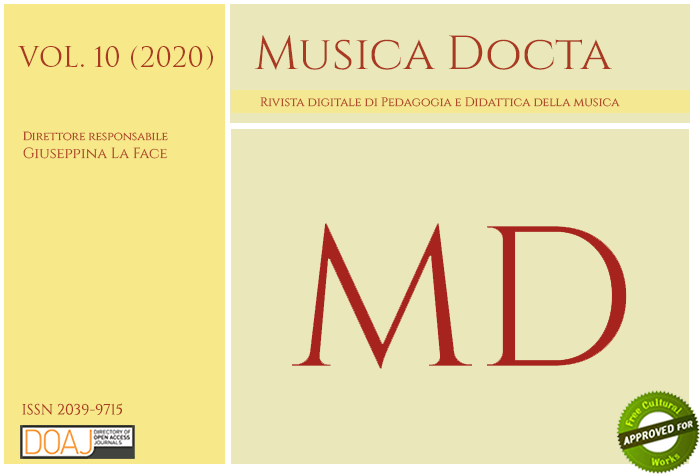Tradurre in parole Beethoven: la Sonata per pianoforte in Re minore op. 31 n. 2 “La Tempesta”
DOI:
https://doi.org/10.6092/issn.2039-9715/11946Keywords:
Didactics, Sonata, Piano, BeethovenAbstract
The article simulates a lecture given in front of a musically non-literate audience, with the aim of illustrating one possible method for translating music into words. The exercise consists in a description of the first movement of the Sonata op. 31 no. 2, "The Tempest", by Ludwig van Beethoven. During an intermittent but complete listening of the initial Largo-Allegro, the various passages are introduced, avoiding technical terms and focusing on a description of the expressive effects obtained by the composer through the sound of the piano, and the melody, rhythm, and syntax of the instrumental discourse. The intention is to arouse the interest of the audience, encourage them to listen attentively and consciously, and show the beauty of Beethoven's movement and its extraordinary originality within the landscape of early 19th-century instrumental music. In this case the translation of music into words involved not only an illustration of the music’s internal dramas - contrasts and variations in rhythm, timbre, melody, dynamics, etc. - but also, exceptionally, narrative images that the Sonata material evokes with particular clarity.
Downloads
Published
How to Cite
Issue
Section
License
Copyright (c) 2020 Paolo Gallarati

This work is licensed under a Creative Commons Attribution-ShareAlike 3.0 Unported License.




